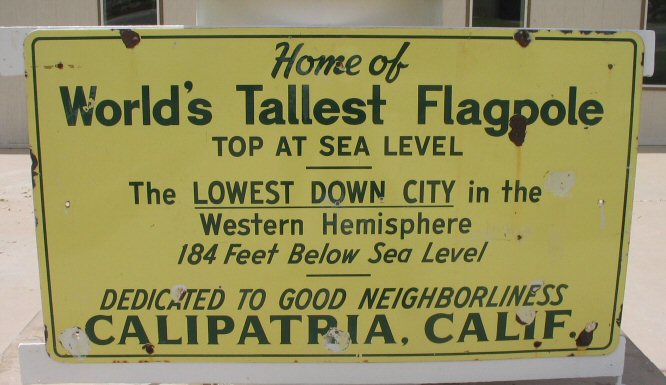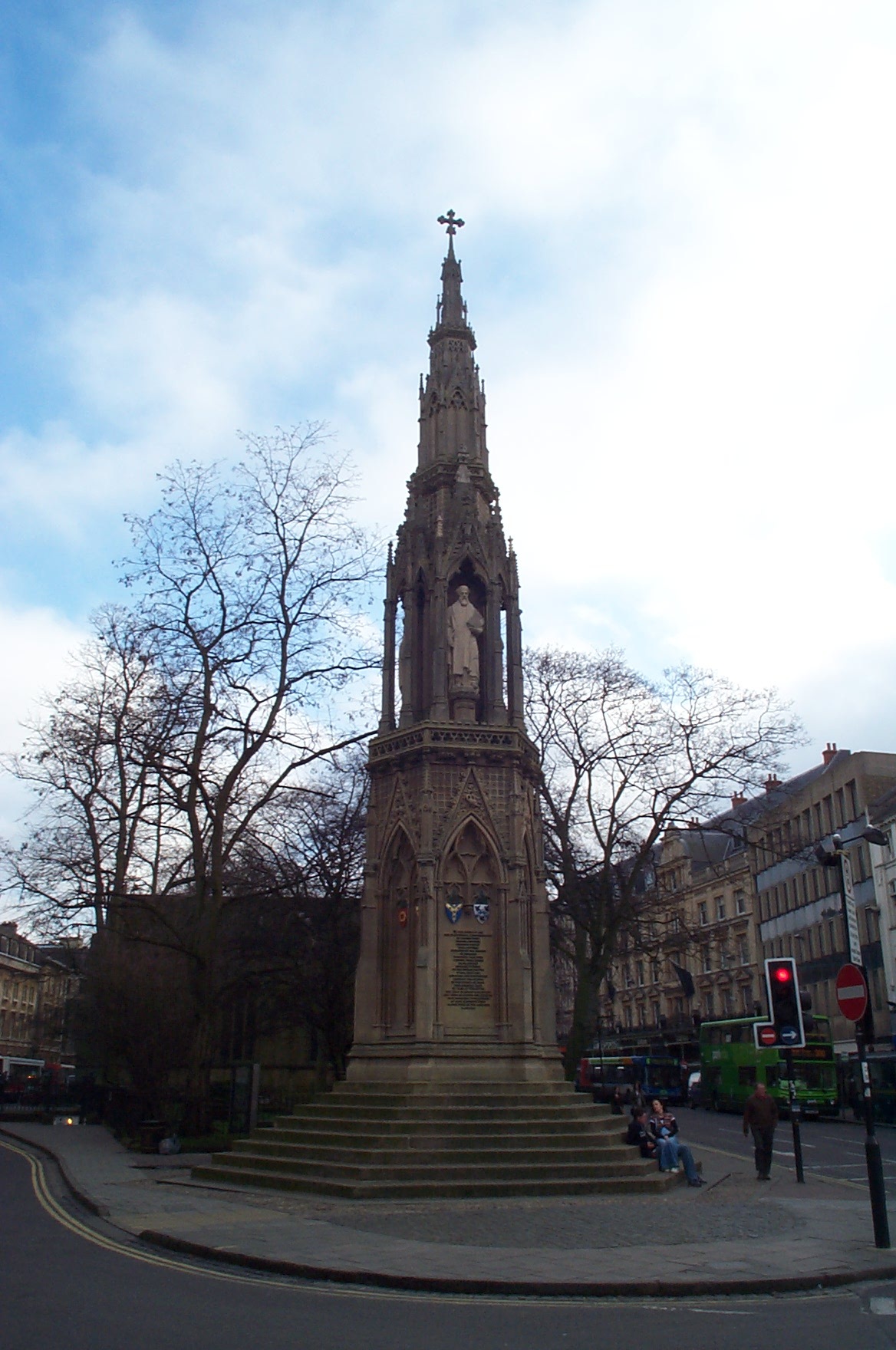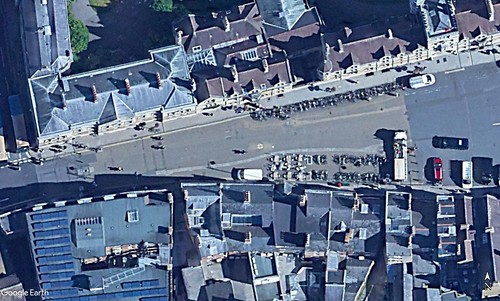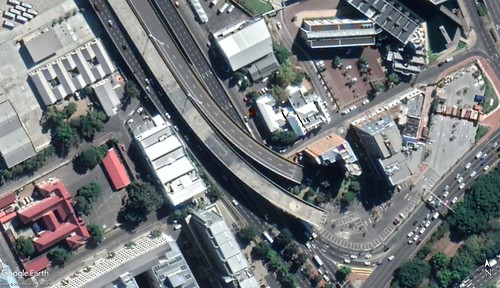Contest #630: Calipatria “Sea Level” Flagpole, Calipatria, California
The municipal flagpole in the small desert community of Calipatria, California was, at the time of build, the tallest flagpole in the world. The base of the flagpole sits 184 feet (56 M) below sea level, and the ball at the top sits at exactly sea level.
The “Good Neigborliness” on the plaque is a reference to one Harry Momita. Harry was the town pharmacist in 1957. He and his wife Helen had lived in the Japanese internment camps during World War II, but Harry was a dedicated patriot, proud of his inherited home.
On a trip to visit their son in Los Angeles, the Momitas were in a horrible car crash. Helen was killed instantly, and Harry was critically wounded. The community drew together — they kept the pharmacy open with the help of a pharmacist from the next town over, they collected donations towards paying for Helen’s funeral and Harry’s medical care. When Harry was released and returned home, he was so touched by the graciousness of the town, that he decided he would work to create something that would make the town stand out.
The town’s elevation had long involved jokes about creating a building or something that would top out at sea level, but Harry took this idea seriously. He began to collect donations to build the flagpole, he got an architect and engineer to donate their time, he got a steel pipe company to agree to do the job for cost. Harry’s story and his quest started to make national and international news.
In May of 1958, the television program “This Is Your Life” featured him (the previous week’s guest was Kirk Douglas). They spotlighted this immigrant with a tragic past, still staunchly patriotic. They talked about his and Helen’s time in the detention camps. They also talked about his desire to build this monument to “Good Neighborliness”. Through the program, he won a car and several other prizes, including $1000 in cash — the last bit of cash he needed to start construction.
Those who found it — all before the hint:
- Walter_V_R
- hhgygy
- Garfield
- Eloy Cano
- Lighthouse
- Phil Ower
- Paul Voestermans
- Martin de Bock
- Jean Noyau
Congratulations to the series winners, with perfect scores, hhgygy, Garfield, Lighthouse, and Jean Noyau.
Contest #630 Hint
The truly surprising thing about this thing is not where it is as a whole, but where the top of it is.
Contest #630
Contest #629: Martyr’s Mark, Broad Street, Oxford, England
To say that Henry VIII’s daughter eldest Mary was no fan of the English Reformation would be a significant understatement. Mary was an ardent Catholic, and upon ascending to the throne after the death of her baby brother Edward, immediately started efforts to restore Catholicism back to England and Ireland. These efforts included the executions of any who would stand in her way — causing her to be labeled with the nickname “Bloody Mary”.
Among the 280 religious dissenters burned at the stake included a pair of Anglican bishops (Hugh Latimer and Nicholas Ridley) and the Archbishop of Canterbury, Thomas Cranmer. These 3 men are referred to as the “Oxford Martyrs” and there is a memorial to them just down the street from this weeks location.

By https://www.johnfoxe.org/woodcuts/f1805ins5.gif, Public Domain, Link
The mark in the middle of the street in the contest image is the Martyr’s Mark — the location where the actual executions took place in October 1555 (Latimer and Ridley) and March 1556 (Cranmer).
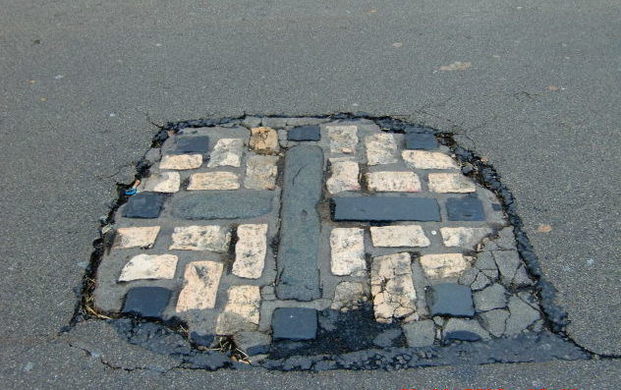
Those who found it before the hint were:
- Paul Voestermans
- Martin de Bock
- Walter_V_R
- Garfield
- Lighthouse
- Phil Ower
- hhgygy
- Jean Noyau
And after the hint:
- Gillian B
- Andreas Meister
- Robin
Contest #629 Hint
A real “hotspot” in the mid-1500’s for those who happened to deny transubstantiation.
Contest #629
Contest #627 Hint
Site of the construction of the world’s largest extremely-annoying-noisemaker-used-at-some-sporting-events. Luckily, this thing was never blown.
Contest #627
Contest #626: The Twelve Apostles Cottages, Catacol, Scotland

By Wendy Kirkwood, CC BY-SA 2.0, Link
The Highland Clearances were a very controversial set of policies carried out in Scotland in the mid-1700s to the mid-1800s. Landlords, trying to increase income, pushed out traditional open-space farmers and sustenance hunters to make way for large-scale sheep farms (which paid much higher rent). The farmers and hunters who were pushed out of these lands were expected to find employment in other industries, including fishing.
To this end, on the Isle of Arran, this row of cottages was built to house those who were cleared from the countryside who were expected to turn to fishing in the Firth of Clyde. The builders put a different type of window in the upstairs in each cottage, with the idea that the family of one of the fishermen could signal them by lighting a candle in that window and the fisherman who lived there would know to come in.
Of course, it didn’t really work that way — for one thing, the folks who were cleared from the land weren’t too keen to just jump into fishing. The cottages sat empty for a long time.
Currently, they are used as vacation lodging (think AirBNB or VRBO).
Those who saw the light included:
- Phil Ower
- Martin de Bock
- Paul Voestermans
- Eloy Cano
- Garfield
- Lighthouse
- Walter_V_R
- hhgygy
- Jean Noyau
None after the hint.



